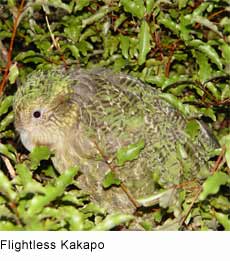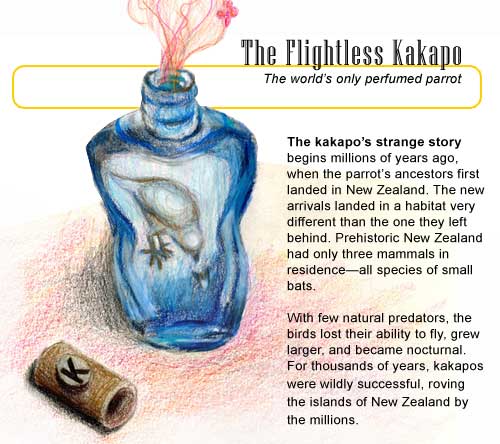|
And then the humans came... When Maori settlers arrived in New Zealand roughly one thousand years ago, they introduced predators into the habitat, and hunted the birds for their luxurious feathers. In the 1840s, European settlers further jeopardized the kakapos by clearing huge amounts of land for farming, and importing yet more mammalian predators, and placing them in captivity, where they quickly died.
 The characteristics that make the kakapo vulnerable to predators are also what make it so fascinating an animal. Not only is the kakapo the largest and longest living parrot species, it is also the only flightless and nocturnal parrot on earth! It is remarkably mammal-like, equipped with a strong sense of smell and whiskers, which help the bird detect food in the dark. The characteristics that make the kakapo vulnerable to predators are also what make it so fascinating an animal. Not only is the kakapo the largest and longest living parrot species, it is also the only flightless and nocturnal parrot on earth! It is remarkably mammal-like, equipped with a strong sense of smell and whiskers, which help the bird detect food in the dark.
One of its most striking characteristics is its strong odor, which resembles honey, an air freshener, flowers, or the inside of a violin case. The kakapo’s powerful fragrance, inability to fly, and tendency to freeze when it senses danger make it easy prey for hungry mammals. Ironically, these solitary birds have been known to enjoy the company of humans. They are naturally curious, and people that have interacted with the birds report that they have distinct, charming personalities.
Though the average kakapo lives for roughly 60 years, they do not breed often, and only 86 individuals are alive today. These surviving kakapos are managed closely by the Kakapo Recovery group. Humans finally realize that kakapos desperately need help, and we can only hope that it is not too late.
|

